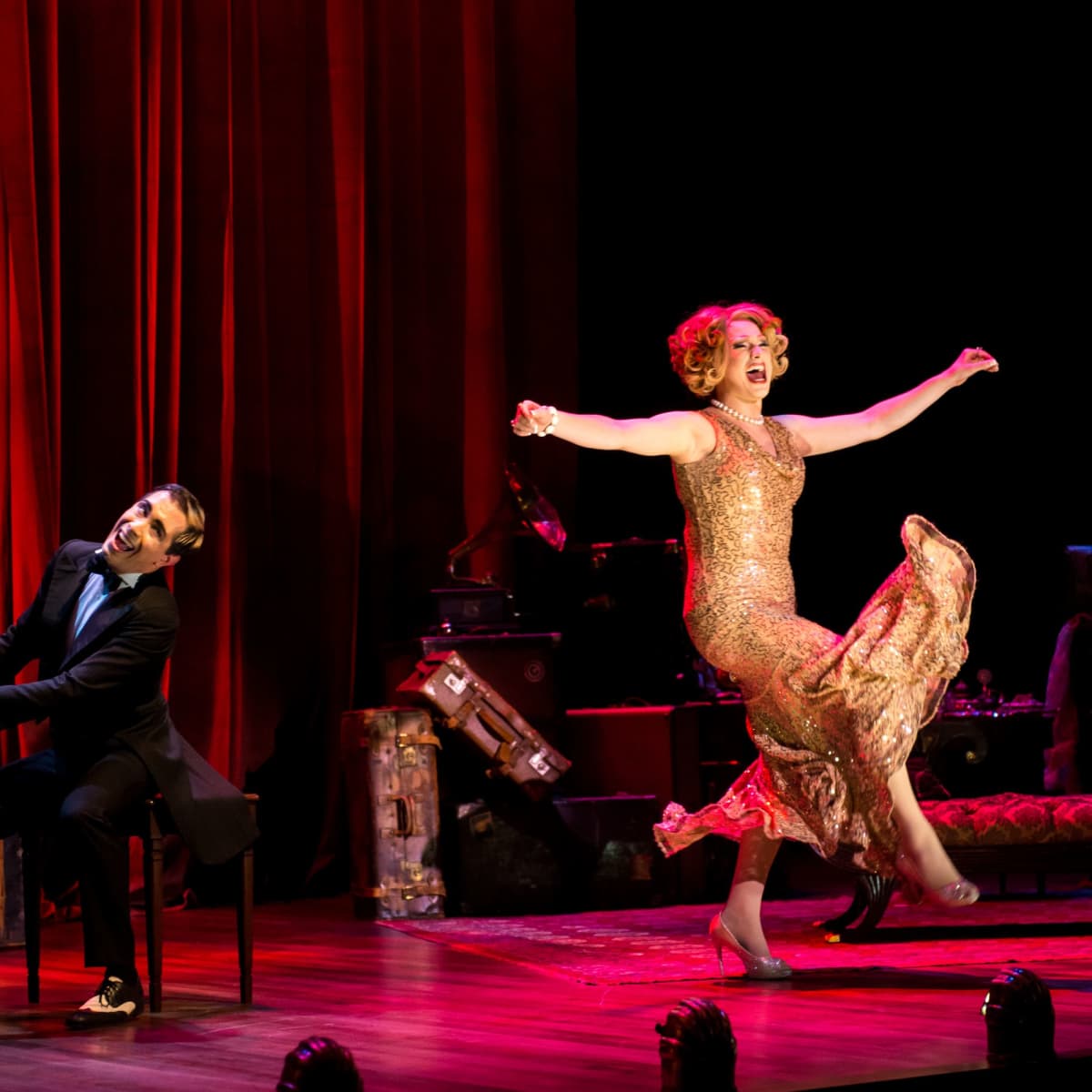INTERVIEW
“Things That Really Light My Fire:” An Interview with Sanctuary City Director Desdemona Chiang
Hear from Sanctuary City director Desdemona Chiang about her first reaction to reading the play, personal connections with the characters, and more in this conversation with Seattle Rep.

Seattle Rep: What was your initial reaction after reading Sanctuary City for the first time?
Desdemona Chiang: I knew this was a really gripping, powerful piece of theater that was making its way around the country, and I was floored by the material. I think [playwright Martyna Majok] is so efficient and raw in the way she crafts her language. Her plays Ironbound and Cost of Living were both done in Seattle recently [at Seattle Public Theater and Sound Theatre Company, respectively]. I knew Martyna was someone writing about stuff that I really cared about: marginalized people, invisible communities, and the ways that folks have to work to survive in a system that doesn’t really support them.
I'm a director who loves plays about systems. Personal stories are always more exciting to me when they reflect something larger and political about the world we live in. Like, how do we as citizens become better people? Or how do we right the conflict between morals and economy? All things that really light my fire. I was also just really struck by how much I related to the play, even though it wasn't literally my story.

Actors Emilie Maureen Hanson and Junior Nyong'o with director Desdemona Chiang in rehearsal for Sanctuary City (2024).
SR: This is a perfect segue to my next question: Do you have any personal connections to the story or characters in Sanctuary City?
DC: When I first read Sanctuary City, I found myself reflecting on my time in high school, and in the ways that when you're a teenager, things kind of happen for you. In high school, you're told where to go to class, you're told what to do, there are systems in place and you just have to agree to exist in this system that's been presented to you. It occurred to me, I think, for the first time, how invisible access to education was to me.
Background-wise, I was born in Taiwan and in the 80s, my parents came to America. My parents were fleeing what they thought was going to become a very problematic situation in Taiwan, and they came to this country on student visas, I think (it was probably easier to get student visas in the 80s). I came here when I was very young, at age three, and I was a “resident alien” here for several years and was never officially a U.S. citizen. But I went through life thinking America is my home. Taiwan is a place I remember vaguely as a young person, but really, America is the place that I identified with culturally and socially.
Then when I was in high school, my mom, in a very kind of mysterious way, said, “We should get you citizenship because it would make college applications a lot easier for you.” I didn't know what she meant, but I was like, sure, I'll do whatever, if it makes life easier. I was in California applying to UC schools, scholarships, grants, awards, and all those things, not realizing how much access I had to those opportunities because I was a legal immigrant.

Actor Emilie Maureen Hanson in rehearsal for Sanctuary City (2024).
By the time I was in high school, my mom had already gotten naturalized. I remember at seventeen, I went into a government office and took a quick oath, swearing to foreswear allegiances to other foreign nations, blah, blah, blah. Then it was like, BOOM, stamp. I got all my paperwork done and it felt like I skated my way into citizenship, not realizing how hard it would have been for so many other people. Naturalization allowed me to access grants and scholarships that got me into college, which then got me into graduate school. And again, I was blissfully unaware of this access and privilege as a young person because I was focused on boys and the things all high school kids care about, right?
Reading Sanctuary City reflected back to me that there was a version of my life that could have mirrored the lives of the characters in the play. I could have been brought here the way the character of B was: Brought here on a visa, overstayed it, become undocumented, and then been stuck again. And it was a different time in the 80s when I was going through all this. 9/11 hadn’t yet happened. It was a different world. But that idea really stuck with me. That was my way into this play: Imagining myself at 17. What would I have done at that time in different circumstances? What would have been my options? This play really asks the question, what part of you would you need to kill in order to survive? These are harrowing decisions.
SR: Shifting gears a bit, how do the technical designs play a part in telling this story?
DC: This play is an actor’s calisthenics. The first half of the play is just two people on a blank stage: no furniture, no set. It's all just the actors and our imaginations. The play is purely driven by the actors’ skill and craft. There are moments where the scene is going one direction, then it ends abruptly, and the actors have to pull themselves out of the emotional trench and start something completely different. They must imagine the environment for themselves. The actors have to do a lot with very little help from anything on stage, other than lights and maybe some sound.

Actors Junior Nyong'o and Josh Kenji in rehearsal for Sanctuary City (2024).
When we get into the second half, we're in a real space. We have walls, we have furniture, we have the character of Henry, we have objects. It's not just memory anymore—once Henry arrives, it’s real. In a memory you can tweak and retell a story, but in real life, you can’t deny the couch in the room; you can’t deny the other human in the room; you can’t deny all the tangible, material things in front of you. So that’s how I've imagined the logic of these two halves of the play and how this is represented visually on stage with the technical designs.
SR: Is there anything else you want our audiences to know about the play? About what they can expect? Anything you want them to walk away from the show with?
DC: If anything, I want audiences to have more of an awareness of how much we take for granted in this country. I would love for folks to understand that immigration is an ongoing issue, particularly because this nation is a nation of immigrants anyway! Who can and can't be here, who doesn't deserve to be here, who has the right to earn a place here are all questions that I think many folks don't have to confront on a daily basis. I would love for audiences to walk away with a greater understanding of how challenging it is for those who are really on the fringes.
See Desdemona's work in action in Martyna Majok's Sanctuary City, playing at Seattle Rep March 1 - 31, 2024.
Rehearsal photography by Sayed Alamy.





